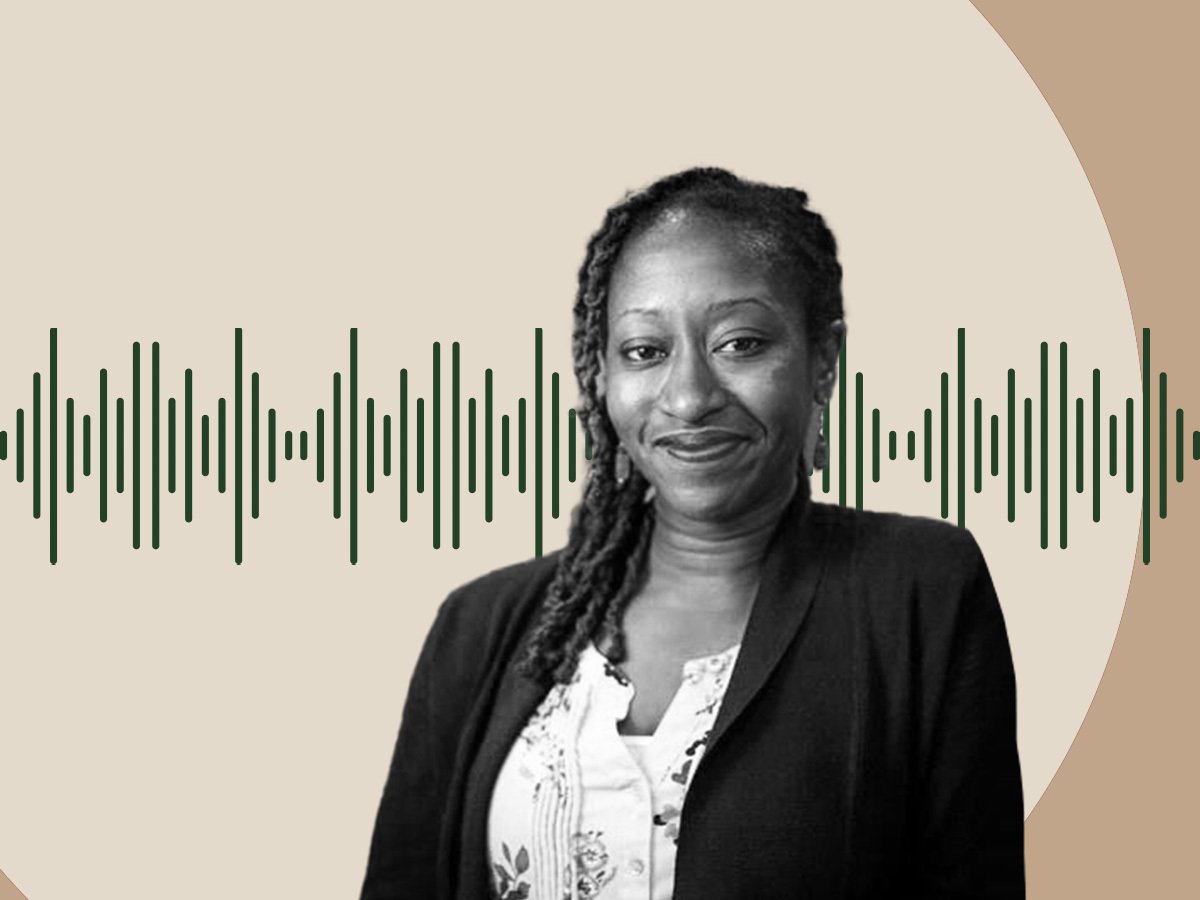
Nearly all grassroots groups agree that education about the economy is essential. But rarely is education treated as urgent. Mobilizing to protect a working-class family from eviction is an emergency; helping members understand why housing markets are unlikely to deliver affordable, high-quality housing in sufficient numbers is not.
Education in political economy—that is, a classic understanding of economy that connects economics and politics (as in the work of Adam Smith, David Ricardo, and Karl Marx)—needs to not only help members connect their individual problems to their systemic root—namely, racial capitalism—but also to create spaces to collectively dream and strategize alternatives, thereby connecting resistance organizing to building the alternatives we want to see.
Central to this work is the collective process of study, research, and learning with the goal of “changing the world.” The point, in short, is not simply to spread knowledge but to apply this knowledge toward positive change. Of course, this is a dialectical process, where lessons learned from past campaigns inform future organizing.
Without sufficient movement education, we are unprepared for the moments when windows of opportunity for significant social change arise.
In our experience, grassroots organizations make two mistakes regarding movement education. First, there is a lack of prioritization. As noted above, most grassroots groups are simply overwhelmed with more immediate concerns. Second, they often use traditional classroom methods. While these methods may work for some, we find that “popular education” methods appeal to more people.
This is why our two groups—the Center for Economic Democracy (CED) and the Center for Popular Economics (CPE)—have created a curriculum rooted in popular education practices intended to educate people and communities about ways to challenge the unjust economic system at its root. We call this curriculum “Economics for Emancipation” (E4E). Since launching in March, our website has already attracted over 11,000 people—this tells us there is indeed a hunger for liberatory economics education.
Why Movement Education?
Without sufficient movement education, we are unprepared for the moments when windows of opportunity for significant social change arise. Consider the uprisings following the Minneapolis police murder of George Floyd in 2020. Millions of people were out in the streets in arguably the largest mass protests in US history.
Much of the diagnosis veered toward Afro-Pessimism—crudely put, the idea that American society is incorrigibly anti-Black. Meanwhile, many of the solutions proposed pushed a version of “Black capitalism” and elite identity politics, such as encouraging people to “Buy Black” and support Black elected officials and business executives.
Without a solid understanding of racial capitalism, we were left with an inadequate political analysis—and, therefore, an incoherent political strategy. Instead of millions of dollars going into ineffective corporate diversity, equity and inclusion (DEI) programs, how much more impactful would it have been if the millions protesting were aware of and understood the need for more radical agendas like the Movement for Black Lives’ Vision for Black Lives?
In response to the 2020 uprisings, we developed a module on racial capitalism as part of our E4E curriculum to help participants understand the complex relationship between race and class, between racism and capitalism, and how the two can reinforce and undermine one another. We explored the history of capitalism and how it has always been racialized. We discussed the work of feminist philosopher Nancy Fraser and both greater redistribution of income and wealth and greater representation for Black people in politics, business, media, and academia. And we did this in a democratically structured cooperative study, with the hope of teachings leading to action—fundamentals embodied by popular education.
Why Popular Education?
Popular education in the tradition of the 20th-century Brazilian educator Paolo Freire accomplishes two things: First, it is designed to work with adult learners from marginalized groups. Second, it is explicitly meant to get those people to engage—or deepen their engagement—with organized politics.
Popular education often takes the form of interactive activities, focused on problem-posing and inquiry based on people’s lived experiences, instead of the traditional model where an all-knowing teacher deposits knowledge in students’ brains. By relying on multiple modalities, not simply traditional lectures, it is possible to reach a larger group of students, especially those who never thrived in a traditional classroom setting.
In workshops, we design activities around the “popular education loop.” Participants move fluidly across the different “stages,” including spaces to draw out the group’s existing knowledge, and plan toward action or strategy. This process, which happens multiple times within each workshop and across different workshops, creates space for individuals and the collective group to envision what changes we want to see and to strategize on how to get there. Concretely, our workshop focuses on drawing out participants’ existing knowledge and experience with the extractive capitalist economy and connecting that to a systemic analysis of capitalism.
At the same time, we expand our collective definition of economy to encompass “the processes that provide for human life.” The economy, then, is about what both humans and animals need, and the processes used to meet those needs. Therefore, we should feel empowered to actively participate in, reimagine, and create change toward how we want the economy to function. In that process, we also explore alternative political economic systems and learn strategic tools to dream and build an economy that centers care, relationship, and liberation.
Sign up for our free newsletters
Subscribe to NPQ's newsletters to have our top stories delivered directly to your inbox.
By signing up, you agree to our privacy policy and terms of use, and to receive messages from NPQ and our partners.
Evolving Popular Education for Changing Times
The earliest version of the E4E curriculum was first developed in 1979 by the Center for Popular Economics—a collective of students, faculty members, and alumni of the economics department at the University of Massachusetts, Amherst. Since then, organizers have put together an annual summer institute in Western Massachusetts—first with stewards and rank-and-file workers in labor unions, and later mostly with social justice activists and members of nonprofits. Over the years, the E4E curriculum has been developed into a series of workshops and materials to help participants understand the logic of capitalism while exploring alternative political economic systems.
We updated the curriculum in 2018 as part of a summer workshop series with the Dream Defenders, a racial justice group formed in Florida in 2012 following the murder of Trayvon Martin by a racist vigilante. To address their learning needs (and those of similar groups), the curriculum was updated to focus more on intersectionality, ecology, and political strategy. Accordingly, we rebranded our curriculum as “Economics for Emancipation.” Since 2019, the Center for Economic Democracy has been partnering with the Center for Popular Economics to situate the curriculum more deeply in popular education pedagogy and principles and connect it to solidarity economy activists.
The pandemic and the uprisings apparently inspired a lot of people to want to understand our political economy better.
Bringing Popular Education Online
In 2020, due to COVID, we had to transition our materials online. This proved to be a challenge since many of our activities required in-person interaction. For example, one of our most popular modules illustrated the concept of the macroeconomic circuit, where aggregate income must equal aggregate expenditure, by having participants impersonate workers and firms trading goods for money and work for wages. This was impossible to move online, but most of our other materials could be translated to remote delivery.
The transition online also coincided with a large upsurge in interest. The pandemic and the uprisings apparently inspired a lot of people to want to understand our political economy better.
Since we launched in March 2023, we have had more than 1,000 downloads of our curriculum materials.Unable to meet this surge in demand for workshops by ourselves, we experimented with a “Train the Trainer” series. The goal was to train community, tenant, and labor organizers to facilitate “Economics for Emancipation” in their own communities. This means they do not need to rely on our limited time and attention, and also hopefully institutionalizes political education in the day-to-day of these grassroots organizations. For this reason, we have made the curriculum “open source” and actively encourage widespread adaptation. Our website includes extensive resources for both group facilitators and local study group participants.
In this way, organizers have the agency to use the curriculum for multiple goals: as part of other movement education efforts to shift consciousness among members, to strengthen the organization’s political and organizing strategy, and to inspire new ideas that aim to create long-lasting material changes for the community.
We have also partnered with a group of incredible solidarity economy artists to develop a vision and design a portal that centers solidarity economy organizers, educators, and practitioners as the audience. Our team included graphic designer Belén Marco Crespo and video producers Robin Crane and Ebony Gustave of Cooperative Journal Media.
Since we launched in March 2023, we have had more than 1,000 downloads of our curriculum materials. We have also heard from dozens of grassroots groups, worker cooperative incubators, and movement groups from cities across the United States who have already used or are planning to use the curriculum with other organizers and their members. In October 2023, we partnered with the New Economy Coalition, which will enable us to train a new cohort of organizers and educators to facilitate and integrate the curriculum with their communities and movement work across the nation.
What’s Next?
We need to demystify the economy to improve the material conditions for BIPOC working-class communities. We need accessible popular education where movements can collectively explore and dream of alternatives—an education where people can connect their vision for a democratic economy with their ongoing organizing work. And we need to reprioritize our relationship with education, treating it with importance and reverence rather than as an afterthought.
As we continue to create a curriculum that centers the experience of people and their communities to challenge the unjust economic system, we turn to other organizers and educators to learn from their ways of maximizing the curriculum’s impact.
We ask questions like: Which parts of the curriculum does it make sense to do with grassroots members versus a more experienced cadre? How do facilitators balance political economy content with accessible popular education techniques? These considerations help us better adjust the curriculum to meet the needs of a wide range of organizers.
We are continually learning how to do emancipatory economics education more effectively. We do not have all the answers, but we are certain that movements should take education in political economy seriously. This includes setting aside sufficient space and time to reflect on their work and consider how it could be more effective.












